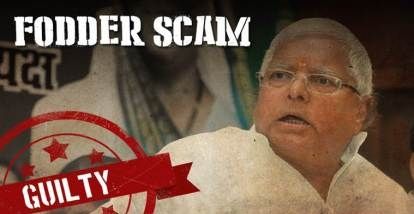Author: Tanu Rani Mahato, New Law College, Bharti Vidyapeeth
TO THE POINT
On February 15, 2022, a special CBI court in Ranchi convicted Lalu Prasad Yadav, former Bihar Chief Minister and RJD leader, in the Doranda treasury case—a part of the infamous fodder scam. This case involved the fraudulent withdrawal of ₹139 crore from the government treasury between 1990 and 1992. The conviction marked his fifth in the broader fodder scam series, which exposed deep-rooted corruption in Bihar’s political and administrative systems. The verdict underscored the misuse of public funds and highlighted the accountability of powerful political figures in one of India’s longest-running and most high-profile corruption scandals.
ABSTRACT
The Doranda case is part of the larger ₹930 crore fodder scam that revealed deep-rooted corruption in Bihar’s animal husbandry department during the 1980s and 1990s. This specific case involved the fraudulent withdrawal of ₹139 crore from the Doranda treasury through fictitious billing, manipulation of records, and fraudulent claims—allegedly showing transportation of cattle on scooters and billing for non-existent supplies.
The conviction came nearly 26 years after the FIR was filed in 1996, highlighting the slow pace of the Indian legal system in high-profile economic offenses. While 24 accused were acquitted, 33—including Lalu—were convicted and sentenced to three years in prison. Lalu was taken into judicial custody and lodged at RIMS, Ranchi, pending sentencing, later pronounced on February 21, 2022.
USE OF LEGAL JARGON
FIR (First Information Report) – A written document prepared by police upon receiving information about the commission of a cognizable offense.
Criminal Conspiracy (Section 120B, IPC) – An agreement between two or more persons to commit an illegal act.
Misappropriation of Public Funds (IPC Sections 409, 420, 467, 468, 471) – Misusing government money or records through forgery, cheating, or fraudulent means.
Special CBI Court – A court designated for trials involving cases investigated by the Central Bureau of Investigation.
Quantum of Sentence – The actual punishment awarded to a convict after conviction is secured.
THE PROOF
The Doranda treasury case came to light after a series of revealing events and actions by officials, which uncovered deep corruption within the system. The Comptroller and Auditor General (CAG) initially flagged red in 1985 on grounds of discrepancies and lack of records for heavy treasury drawls. This audit alert laid the foundation for subsequent investigations. Most dramatic was the evidence from papers that ridiculously illustrated cattle and other animals being moved on motor scooters, also directly indicating manipulated and fake billing procedures. In 1996, however, it was a breakthrough as then Deputy Commissioner Amit Khare directed raids that discovered an enormous paper trail, also showing diversion of funds through sham invoices, phantom suppliers, and phony vendors. The probe resulted in an additional FIR of 170 persons, including powerful politicians, bureaucrats, and business houses. During the course of time, more than 55 out of the accused died, 6 were absconding, and 7 became approvers, showing the vast extent and timeframe of the scam. Acting on public interest litigations, the Patna High Court stepped in and, in a historical ruling in 1996, outsourced the probe to the CBI, directing an exhaustive inquiry into bogus drawls from 1977-78 to 1995-96, calling for an unbiased and comprehensive investigation.
CONCLUSION
The conviction of Lalu Prasad Yadav in the Doranda treasury scam is a symbolic moment in the battle against political corruption in India. Though delayed, justice in the form of judicial accountability was delivered. The case also serves as a reminder of the importance of institutional oversight, the role of whistleblowers, and the power of PILs in steering legal action against entrenched political figures.
This conviction further diminishes Lalu’s eligibility for public office and erodes his political capital, although it also underscores how long-drawn trials often dilute deterrence in white-collar crime cases.
FAQS
1. Who was the whistleblower of the scam?
Amit Khare investigated the matter of excessive and fraudulent withdrawal from the district treasury.
2. Who is Lalu Prasad Yadav and what was his role?
Lalu Prasad Yadav is the former Chief Minister of Bihar and head of the RJD. He was found guilty of criminal conspiracy, cheating, and forgery in the Doranda scam. He approved false expenditures while heading the animal husbandry department.
3. When the scam came into light?
The scam is said to be have started when some government official filed reports. The first FIR was logged in the Chaibasa treasury in 1996 by CBI.
4. What was the CBI’s role?
The CBI was directed by the Patna High Court to investigate all fraudulent drawls in the animal husbandry department from 1977 to 1996. The agency registered multiple cases, leading to several convictions.
5. Why did the case take so long?
Delays were due to the complexity of the case, death of many accused, procedural lapses, and the high-profile nature involving top politicians, which often leads to legal and political manoeuvring.




